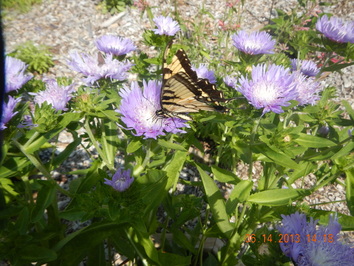
Stokesia laevis, commonly known as Stokes' aster, is native to wetlands, bottomlands, wet pinewoods, savannas and ditches mostly along the coastal plain from North Carolina to Florida to Louisiana. It is an evergreen perennial that typically grows to 1-2' tall. It features fluffy, cornflower-like, violet blue flowers (to 2 1/2” across), each with notched rays surrounding a pincushion center of feathery disk florets. Flowers bloom from early to mid-summer (sometimes with a fall rebloom) atop generally erect, leafy stems that rise from a basal rosette of lanceolate to elliptic, medium green leaves (to 6" long). Stem leaves are stalkless and smaller than basal leaves. Leaves are evergreen in warm winter climates.
Genus name honors English physician/botanist Jonathan Stokes (1755-1831). (Missouri Botanical Garden)
Genus name honors English physician/botanist Jonathan Stokes (1755-1831). (Missouri Botanical Garden)
